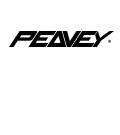By Marty McCann
I am aware of a lot of church music directors that want to do this, and they insist that the guitar player plug direct into the console. Some folks are real naive when it comes to this. First of all the guitar pickup is very very high impedance and can not be run through a snake with out a Balanced D.I. But that is still a very small part of this issue. Those of you that are guitar players, have you ever tried to play an electric guitar through your stereo? The sound is short of disgusting. When you play any chord on the guitar that is taken direct thru the console, it is like playing through that stereo. The fundamentals are so intense that they step on or mask the harmonics. Leo Fender recognized this many many years ago, and that is why his amplifiers have a mid-range notch at about 250 Hz (near Middle "C"). Most other conventional guitar amplifiers have a similar notch, sometime a little higher in frequency, but never the less they are notching out the mid's.
There are no "Flat" settings on most guitar amplifiers. Most of them have passive tone controls (Not all but most). Passive tone controls are "Cut Only," and by their nature interact considerably. What do I mean by that, well if all of the tone controls are not at "10," if you turn up the Bass control, you get more bass as you would expect, but most players don't realize that the treble sound has just diminished as well. If you turn down the treble, the bass will also increase. The mid-range notch and the interacting passive tone controls are only a part of the mechanism of electric amplified guitar. You also have the sound of the tubes (in a vacuum tube amplifier), which have their characteristics. And when the guitar is played at high power levels for any particular tube type amplifier, the saturation of the output transformer contributes quite a bit to that rock and roll sound we have come to love.
It's not over yet; lead rock guitar players are also getting some of "their sound" from the way in which the guitar amps' loudspeaker breaks-up. Guitar amplifier loudspeakers are different from sound reinforcement loudspeakers, in that in sound reinforcement, we don't want any distortion added to the sound by the speaker. We want a linear "Reproduction" of the sound that has been "Produced" by the guitarist. Now a rhythm guitar player or jazz player may prefer a speaker in their amp that doesn't break up. A lot of musicians (and sound folks) don't understand the role that harmonics play in music. Some think that any and all harmonics are cool. Well, low order even harmonic distortion, indeed can be cool, it's a bit like having another guitar player playing the same chord an octave higher along with you.
And a small amount of odd harmonics can be found in some rock reproduced electric guitar spectrum. But, harmonics are only musically related or consonant within about two octaves above the played fundamental, after that they can become dissonant or unmusical. In the case of a jazz player, who may diminish a ninth or augment a 13th, he has essentially added an odd component to an otherwise consonant chord. This jazz player would not want his amplifier to add a harmonic of this 9th or 13th note, as it would dramatically change the perception or jazz sound of that chord.
The cone break up of the loudspeaker that I referred to in a previous paragraph comes in to play when the guitarist plays his rock and roll lead. The break-up of the loudspeaker designed for that amplifier initially adds rich harmonics to the note. In fact, the phrase cone break-up unto its self doesn't sound like it would be desirable, so the guitar amp loudspeaker designers call this euphemistically, "cone cry."
I realize this kind of has become a treatise on guitar amplifiers, but I still think it satisfies the spirit of the question about taking instruments direct into the sound system. There are preamps and stomp boxes today that can contribute some of the above, and of course there are modeling amps and may very well be modeling preamps or foot pedals, I don't know because it has been a long time since I was responsible for M.I. amplifiers. My recommendation is that sound people be made aware of the above information before they let some one arbitrarily plug that electric guitar into a D.I. It is certainly no problem to take bass guitar, acoustic guitars, keyboards, and other instruments directly. However if you are going to send these signals down a long microphone snake, you need to have a balanced connection between the source and the FOH mixer. This is where the D.I. box comes in as it provides the balanced interface between the instrument/amplifier and the sound systems mixer.
